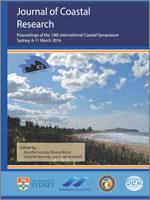Martins, S. E. M; Barcellos, R. L; Flores-Montes, M. J. and França, E. J. 2016. Depositional evolution in a lagoonal estuarine system under a port influence in Northeastern Brazil. In: Vila-Concejo, A.; Bruce, E.; Kennedy, D.M., and McCarroll, R.J. (eds.), Proceedings of the 14th International Coastal Symposium (Sydney, Australia). Journal of Coastal Research, Special Issue, No. 75, pp. 83–87. Coconut Creek (Florida), ISSN 0749-0208.
The Holocene evolution reconstruction corroborates to understand sediment dynamics and, recent anthropogenic environmental changes; in addition, may subsidize the future prospects of its development. The aim of this work is to elaborate a historical comparative analysis of the total organic matter content (TOM), calcium carbonate (CaCO3) and grain size variation in a estuarine environment and adjacent inner shelf area under influence of Recife Port (8°03′S/34°53″W), Northeastern Brazil. Two sediment cores were collected (Jun/2013), one (1.26m long) in the inlet of the estuarine system (T2E); and another (1.30m long) in a sheltered area of a breakwater adjacent to the estuary mouth (T3E). The sedimentation rate, measured based on breakwater building (1909), was 1.18 cm.year−1 in T3E and 0.81 cm.year−1 in T2E. The cores presented preservation of structures indicative of waves and currents processes, such as erosive surfaces, linsen bedding, flaser bedding, and wavy bedding, environment features of shallow platform. Both cores presented variations in sediment composition with an essential carbonate sandy base ranging upward to a terrigenous mud on their tops. The change in sediment composition indicates environmental changes such as the increase in the sediment suspension concentrations, directly influenced by changes in coastal engineering in the Recife Port. The results indicate how important local rivers sediments input and estuarine processes are to deposition features in the estuarine lagoonal system, like the mud trapping and preservation in the inner shelf shallow areas adjacent to the Recife Port.





